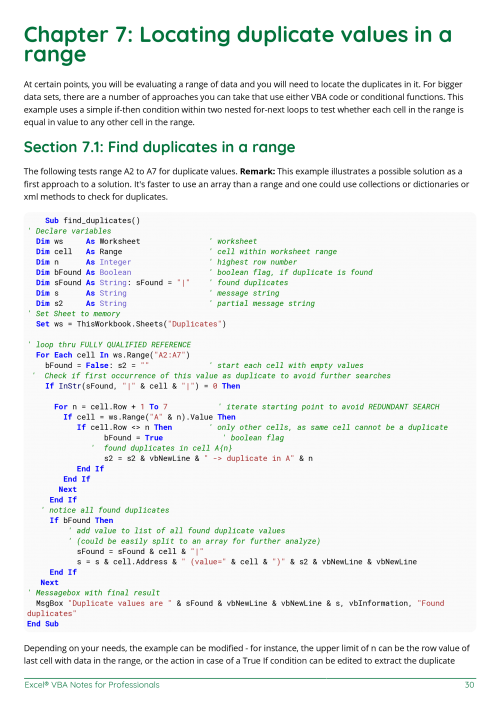
Office Add-ins have a small footprint compared to VSTO Add-ins and solutions, and you can build them by using almost any web programming technology, such as HTML5, JavaScript, CSS3, and XML. The number of procedures in the project, both total and per VBComponent.Interested in developing solutions that extend the Office experience across multiple platforms? Check out the new Office Add-ins model. A summary of the number and type of VBComponents used in the project. These statistics include: A complete procedure listing for all modules in an outlined worksheet. The Excel Code Documentor automatically documents the vital statistics of your VBA project.
The example opens web site and fill a search form to find 'excel vba' text. The macro allows to interact with web page controls (text fields and buttons). These examples will help you automate your tasks and inspire you to sharpen your VBA skills.VBA macro drives internet explorer using its DOM properties and methods.


ActiveSheet.Cells(2, 1).Formula = "=Sum(B1:B5)"Although you can also use Range("A1") to return cell A1, there may be times when the Cells property is more convenient because you can use a variable for the row or column. Worksheets(1).Cells(1, 1).Value = 24Worksheets(1).Cells.Item(1, 2).Value = 42The following example sets the formula for cell A2. You can access single cells via Item( row, column), where row is the row index and column is the column index.Item can be omitted since the call is forwarded to it by the default member of Range.The following example sets the value of cell A1 to 24 and of cell B1 to 42 on the first sheet of the active workbook. Worksheets(1).Range("Criteria").ClearContentsUse Cells on a worksheet to obtain a range consisting all single cells on the worksheet. Worksheets("Sheet1").ActivateRange("A1:H8").Formula = "=Rand()" 'Range is on the active sheetThe following example clears the contents of the range named Criteria.If you use a text argument for the range address, you must specify the address in A1-style notation (you cannot use R1C1-style notation). If the active sheet isn't a worksheet, the method fails.Use the Activate method of the Worksheet object to activate a worksheet before you use the Range property without an explicit object qualifier.
You first have to convert it to single cells via Cells.The following example deletes the ranges L2:L10, G2:G10, F2:F10 and D2:D10 of the first sheet of the active workbook. The following example sets the border line style for cells A1:J10.It is not legal to provide the second parameter of Item for ranges consisting of columns. Worksheets(1).Range("C5:C10").Cells(1, 1).Formula = "=Rand()"Worksheets(1).Range("C5:C10").Cells.Item(1, 2).Formula = "=Rand()"Use Range ( cell1, cell2), where cell1 and cell2 are Range objects that specify the start and end cells, to return a Range object. Cells, where expression is an expression that returns a Range object, to obtain a range with the same address consisting of single cells.On such a range, you access single cells via Item( row, column), where are relative to the upper-left corner of the first area of the range.The following example sets the formula for cell C5 and D5 of the first sheet of the active workbook. Sub SetUpTable()Cells(1, TheYear + 1).Value = 1990 + TheYearCells(TheQuarter + 1, 1).Value = "Q" & TheQuarterUse_expression_. Be aware that after the worksheet has been activated, the Cells property can be used without an explicit sheet declaration (it returns a cell on the active sheet).Although you could use Visual Basic string functions to alter A1-style references, it is easier (and better programming practice) to use the Cells(1, 1) notation.
Worksheets("Sheet1").ActivateSelection.Offset(3, 1).Range("A1").SelectUse Union ( range1, range2. You cannot select a cell that is not on the active sheet, so you must first activate the worksheet. The following example selects the cell three rows down from and one column to the right of the cell in the upper-left corner of the current selection.
It divides a multiple-area selection into individual Range objects and then returns the objects as a collection. Dim r1 As Range, r2 As Range, myMultiAreaRange As RangeIf you work with selections that contain more than one area, the Areas property is useful. The following example creates an object defined as the union of ranges A1:B2 and C3:D4, and then selects the defined range.
Range("A100").End(xlUp))'Assign all the values of the Unique range into the Unique variant.'Count the number of occurrences of every unique value in the source data,RnUnique(lnCount, 1).Offset(0, 1).Value = _",""" & rnUnique(lnCount, 1). Range("A100").End(xlDown))'On the target worksheet, set the range as column A.'Use AdvancedFilter to copy the data from the source to the target,RnSource.AdvancedFilter Action:=xlFilterCopy, _'On the target worksheet, set the unique range on Column A, excluding the first cell'(which will contain the "List" header for the column).Set rnUnique =. Sub Create_Unique_List_Count()'Excel workbook, the source and target worksheets, and the source and target ranges.'On the source worksheet, set the range to the data stored in column ASet rnSource =. Sub NoMultiAreaSelection()NumberOfSelectedAreas = Selection.Areas.CountMsgBox "You cannot carry out this command " & _This example uses the AdvancedFilter method of the Range object to create a list of the unique values, and the number of times those unique values occur, in the range of column A.


 0 kommentar(er)
0 kommentar(er)
